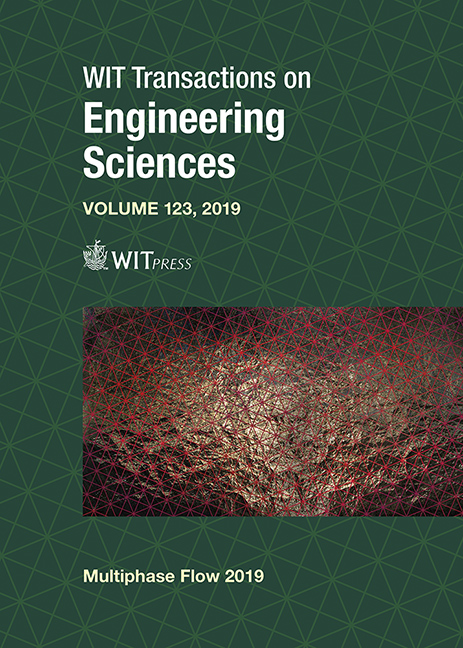INFLUENCE OF THE ORIFICE SHAPE ON MASS FLOW MEASUREMENTS OF AIRWATER MIXTURE
Price
Free (open access)
Transaction
Volume
123
Pages
10
Page Range
33 - 42
Published
2019
Size
455 kb
Paper DOI
10.2495/MPF190041
Copyright
WIT Press
Author(s)
BARBARA TOMASZEWSKA-WACH, MARIUSZ RZASA, BOLESLAW DOBROWOLSKI, OREST SEREDIUK
Abstract
Flow measurements using differential pressure meters are common in industrial applications. In such cases, the flow of gas is often accompanied by conditions that can lead to liquid condensation. As a consequence, flow measurements basically involve gas–liquid mixture metering. For this reason, errors occur in the metering equipment resulting from the variations in the characteristics of the continuous phase that is present in the flow. In addition, the existence of a dispersed phase leads to the development of flow disturbance and pressure pulsations. Therefore, new methods and tools are being sought to enable the measurements of gas–liquid mixture flows that will offer a suitable accuracy of measurement in the instances of flow interference in the form of a liquid phase. This paper reports the results of a study into the application of orifice plate meters for gas–liquid mixture flow metering. The analysis of the influence of the geometry of an orifice meter on the measurement of a two-phase mixture flow was carried out for this purpose. Experimental tests were carried out by application of a standard orifice and three slotted orifice meters with various designs. The experiments included the measurements of air flow containing small amounts of dispersed water in the form of droplets. The analysis also involved the level of differential pressure that is obtained as a result of applying orifice meters, and the level of the permanent pressure loss caused by the installation of an orifice plate. The results of the research were compared with the results obtained for the standard orifice.
Keywords
standard orifice, slotted orifice, two-phase flow, gas–liquid flow, experimental research, Lockhart–Martinelli parameter





